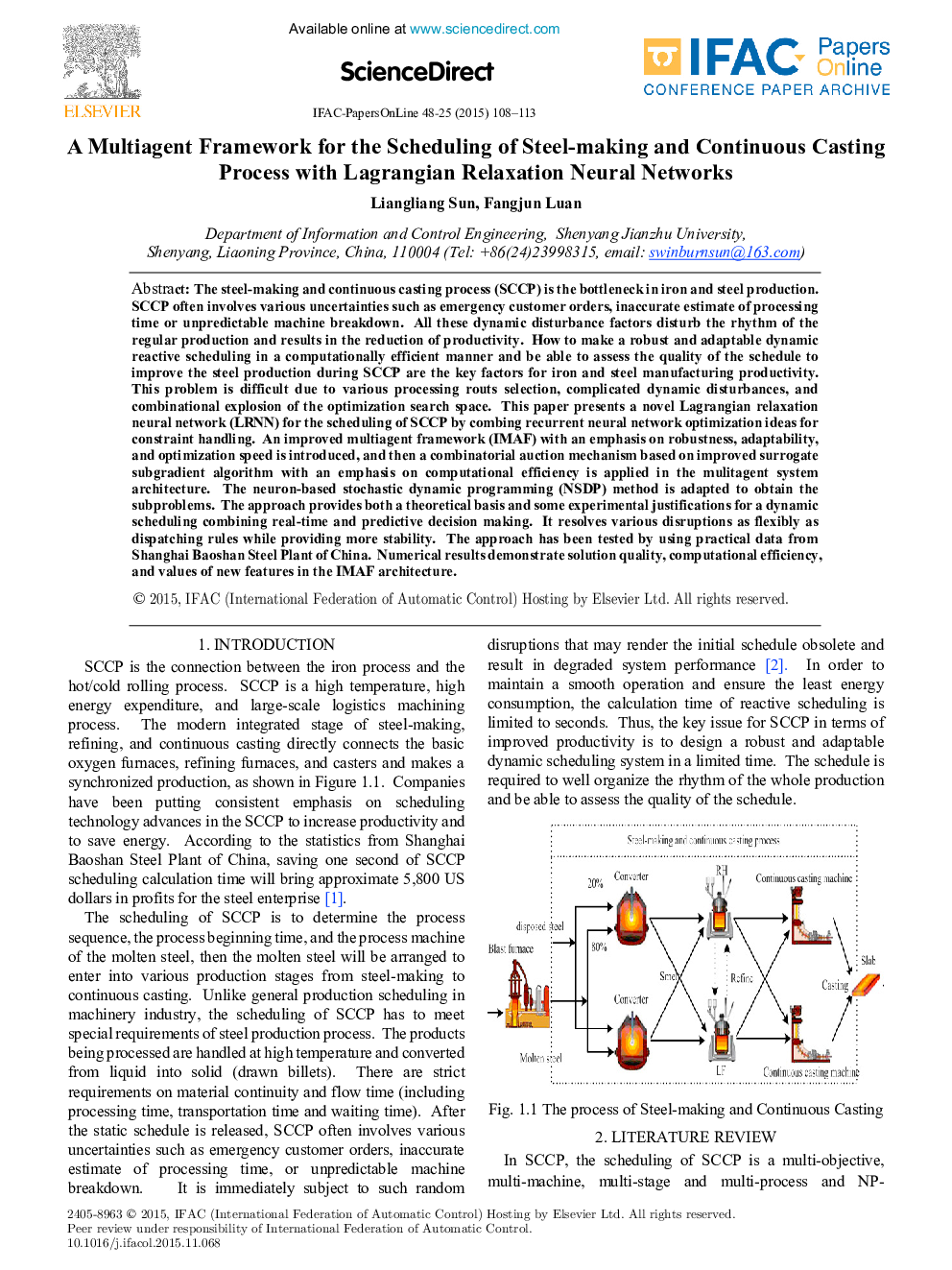| Article ID | Journal | Published Year | Pages | File Type |
|---|---|---|---|---|
| 711519 | IFAC-PapersOnLine | 2015 | 6 Pages |
The steel-making and continuous casting process (SCCP) is the bottleneck in iron and steel production. SCCP often involves various uncertainties such as emergency customer orders, inaccurate estimate of processing time or unpredictable machine breakdown. All these dynamic disturbance factors disturb the rhythm of the regular production and results in the reduction of productivity. How to make a robust and adaptable dynamic reactive scheduling in a computationally efficient manner and be able to assess the quality of the schedule to improve the steel production during SCCP are the key factors for iron and steel manufacturing productivity. This problem is difficult due to various processing routs selection, complicated dynamic disturbances, and combinational explosion of the optimization search space. This paper presents a novel Lagrangian relaxation neural network (LRNN) for the scheduling of SCCP by combing recurrent neural network optimization ideas for constraint handling. An improved multiagent framework (IMAF) with an emphasis on robustness, adaptability, and optimization speed is introduced, and then a combinatorial auction mechanism based on improved surrogate subgradient algorithm with an emphasis on computational efficiency is applied in the mulitagent system architecture. The neuron-based stochastic dynamic programming (NSDP) method is adapted to obtain the subproblems. The approach provides both a theoretical basis and some experimental justifications for a dynamic scheduling combining real-time and predictive decision making. It resolves various disruptions as flexibly as dispatching rules while providing more stability. The approach has been tested by using practical data from Shanghai Baoshan Steel Plant of China. Numerical results demonstrate solution quality, computational efficiency, and values of new features in the IMAF architecture.
